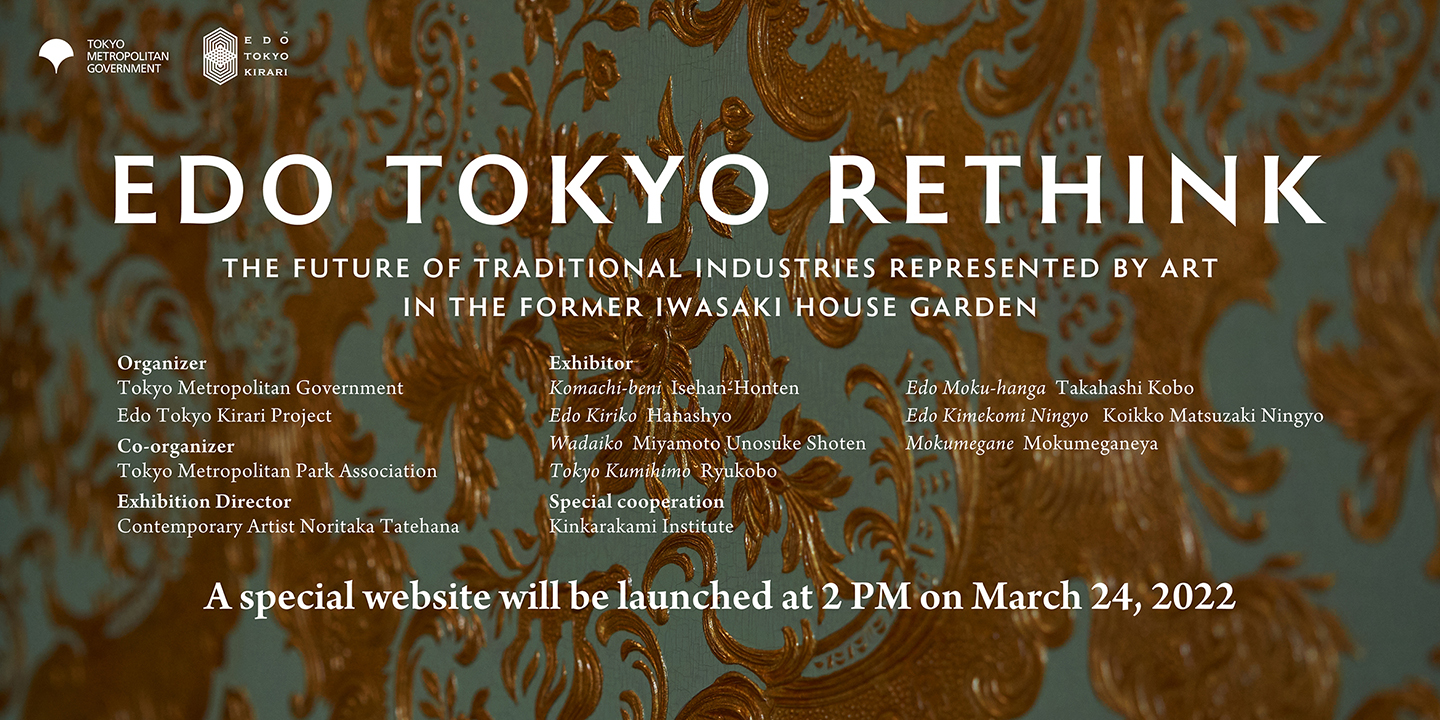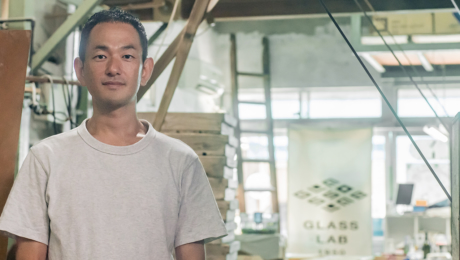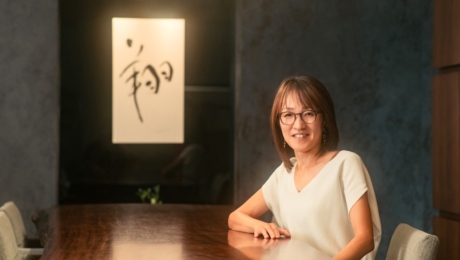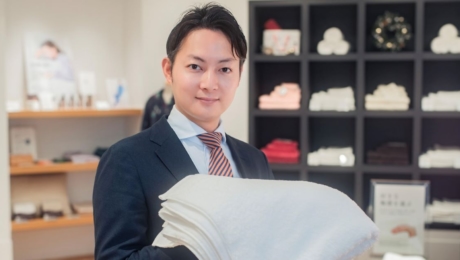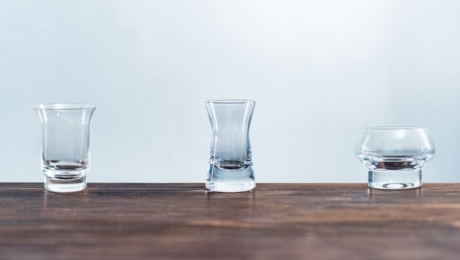
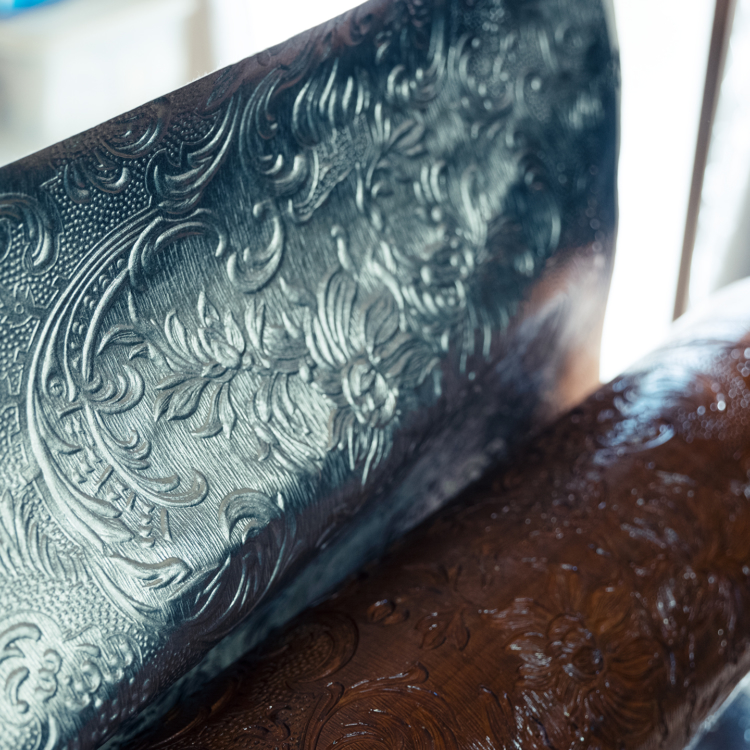
【Edo Tokyo Rethink】Kinkarakami Institute: Connecting a “Phantom Technique” to the Next Generation
2022.03.18
LIFE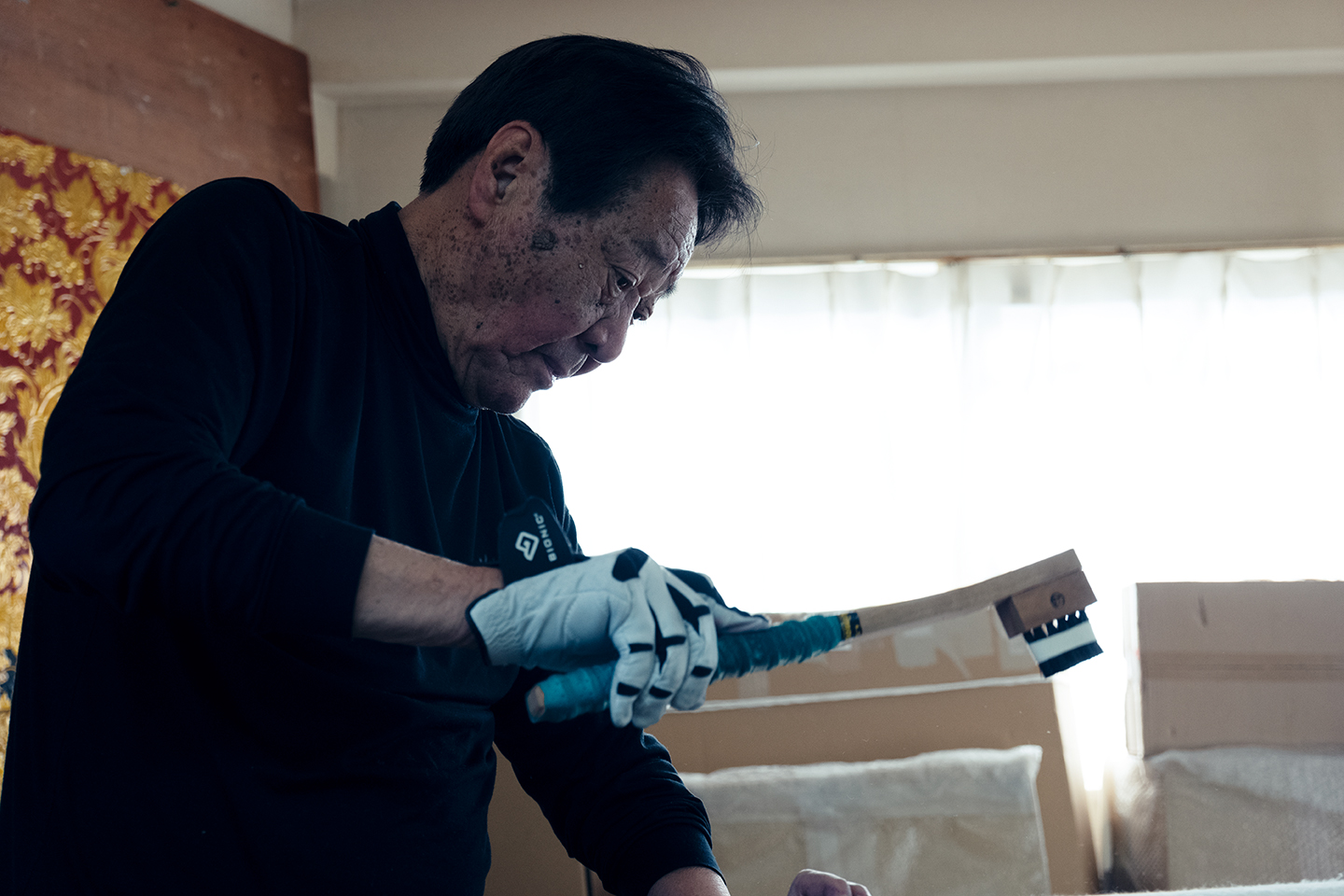
“Our work involved filling in a blank that stretches over 100 years, and so we went through a process of trial-and-error, and sometimes even went astray in our research.”
Construction of the Important Cultural Property, the building that housed the Otaru branch of the Former Nippon Yusen company, concluded in 1906. Restoration work was done that focused on the “Kinkarakawashi”, or Japanese leather paper, used in the building. Takashi Ueda (President of the Kinkarakami Institute) who was in charge of this restoration and maintenance project, spoke on his time with the project.

The roots of Kinkarakawashi can be found in the gilt leather that became famous in Europe starting in the Middle Ages. In the 1700s, Gennai Hiraga worked to recreate this gold leather in Japan. Kinkarakawashi was greatly used through the end of the Edo Period to the Meiji Period, and has been used in many famous Japanese buildings. One such building is the Important Cultural Property, the Former Iwasaki House Garden, which will house the exhibition. Not only that, but Kinkarakawashi was even exported to other countries.
However, by the time Ueda began his restoration work, 100 years had passed since the last Kinkarakawashi boom. Due to the lack of written information on the subject, it had become a “phantom technique” of sorts.
The team had to start building from scratch, enlisting the help of the National Research Institute for Cultural Properties, Tokyo (NRICPT). Sketches of the manufacturing process were used for reference, created by British industrialist Charles Holme and French illustrator Félix Régamey during their visit to Japan during the Meiji Period. Going beyond simply the manufacturing method, the team also spent time considering their materials, from the selection of the appropriate Japanese paper to the brush material.
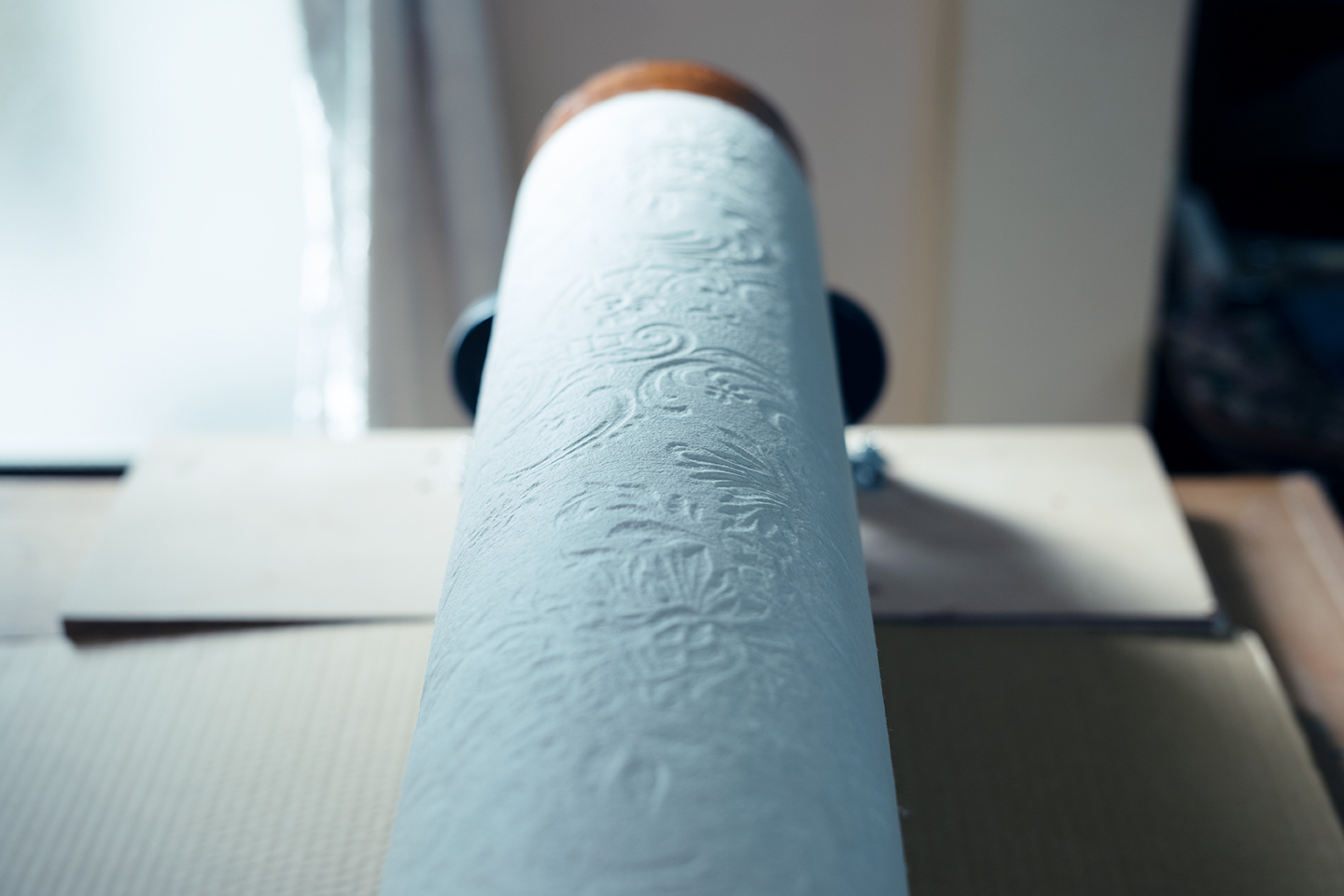
Born to a family of Kyo Yuzen(Kyoto printed silk) producers, Ueda worked as a publisher involved with special printing techniques using materials such as gold foil and traditional Japanese paper. The origin of his almost forty-year relationship in Kinkarakawashi lay in a research trip he made to the Netherlands. Seeing the way that gilt leather used in buildings such as an old-person’s home in the Hague made him realize that it had the power to heal and relax a person’s soul. He says that this experience led to his dream of restoring the technique in Japan.
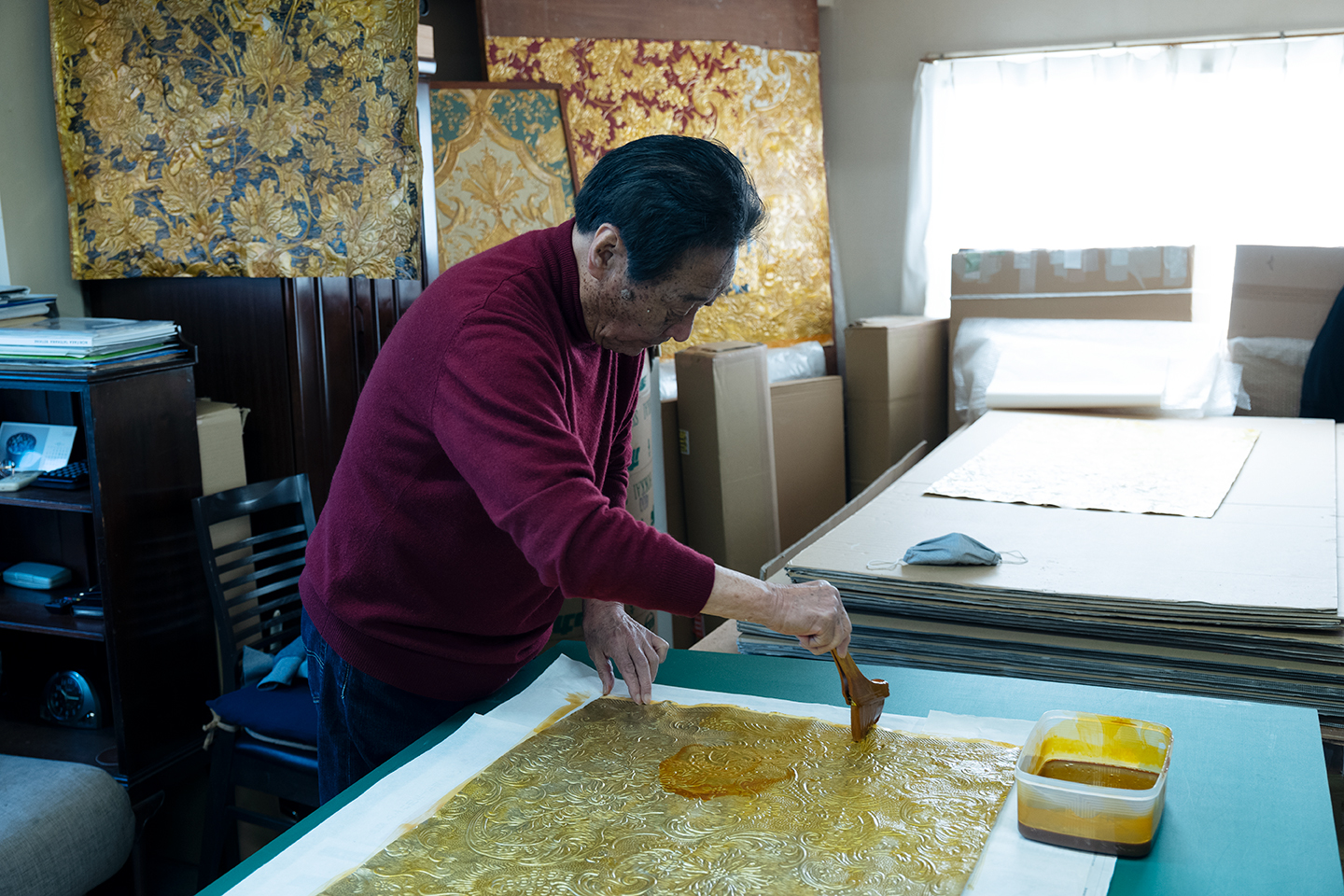
With this romantic vision drawing him into Kinkarakawashi restoration across Japan, Ueda spoke on his anticipation for the collaboration with contemporary artist Noritaka Tatehana.
“In order to create something that will be inherited by the next generation, we have to create those new things through new designs and impressions. I hope that as this resurrected technique becomes a part of an artwork, it will become connected to the future.”
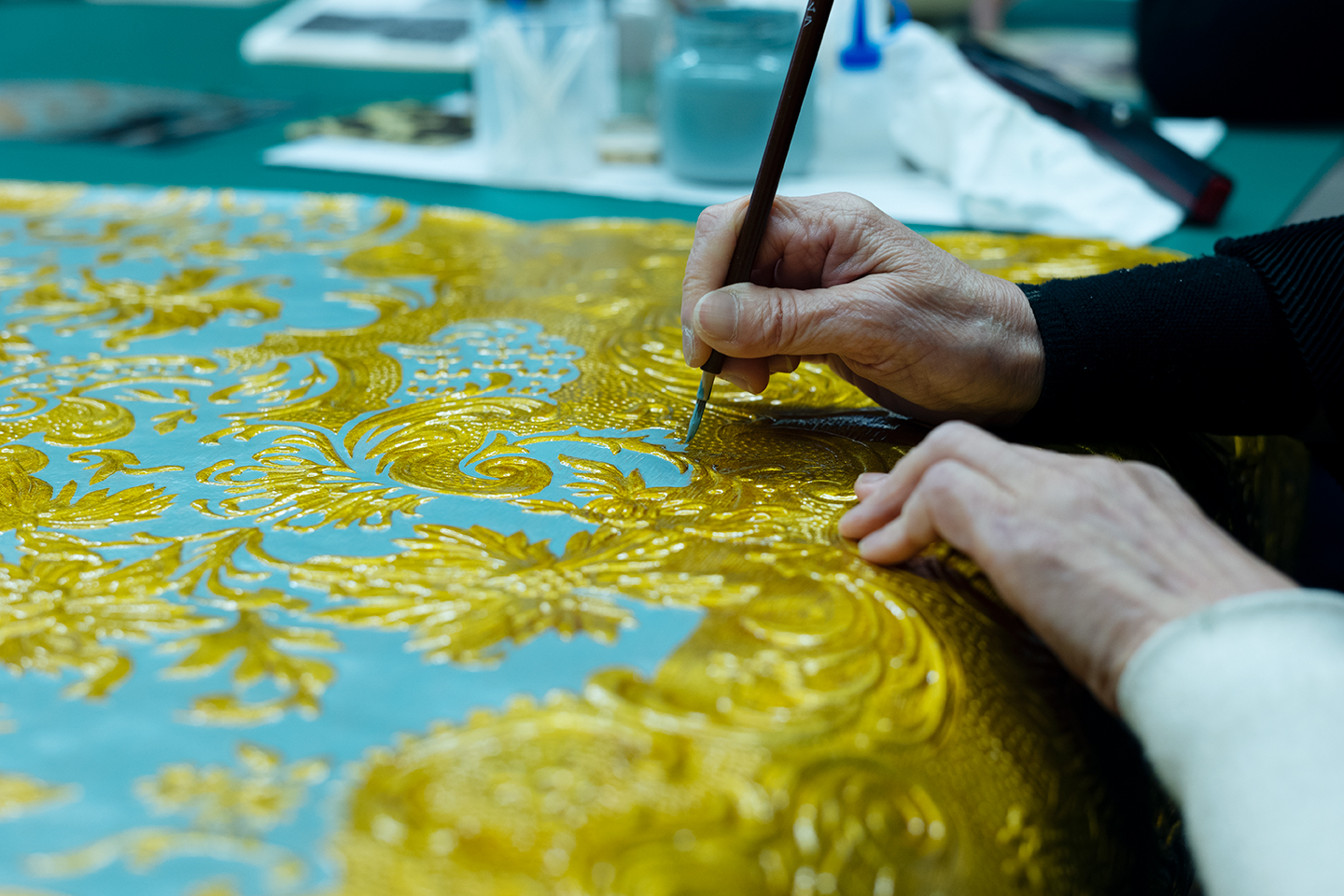
Photo courtesy of NORITAKA TATEHANA K.K.
*All necessary safety precautions were taken during the interview as part of COVID-19 prevention.
Online Exhibition Outline
Exhibition Title: Edo Tokyo Rethink -The Future of Traditional Industries Represented by Art in the Former Iwasaki House Garden-
Exhibition Period: March 24, 2022 (Thu) 14:00 – March 31, 2022 (Thu)
*The exhibition will be available for viewing as an archive at the same URL even after the online exhibition ends.
Organizer: Tokyo Metropolitan Government, Edo-Tokyo Kirari Project
Co-organizer: Tokyo Metropolitan Park Association
